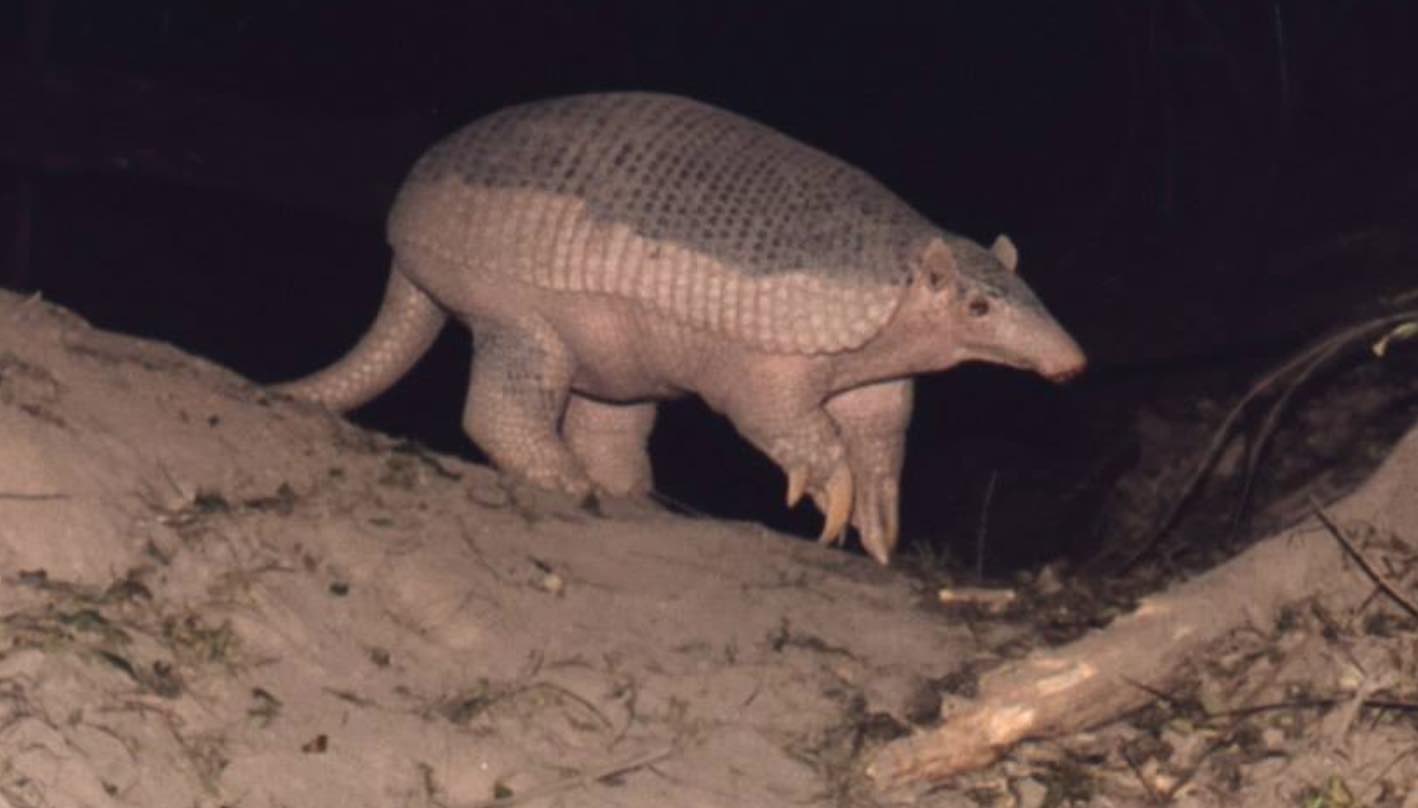The **giant armadillo** is one of the most fascinating and least known mammals in South America. It is in [danger of extinction](https://noticiasambientales.com/animales/en-10-anos-mendoza-rescato-mas-de-16-000-animales-de-fauna-silvestre/) due to multiple factors.
However, it still survives in the jungles of the region to this day. It can reach up to 1.5 meters in length and **weigh more than 50 kilos**.
According to an old report from the **Wildlife Directorate and Biodiversity Conservation** of the Ministry of Environment and Sustainable Development of the Nation, this animal is “the largest of all armadillos”.
It is fundamentally insectivorous, as it mainly consumes ants and termites.
This is the giant armadillo, the impressive animal of the South American jungle in danger
“The head and **face are quite elongated**. Its limbs are strong, and the hands have long claws, which give them the ability to dig deep burrows quickly and easily,” describes the report.
“The largest of these claws measures approximately about 20 cm. The tail, like the legs, is **covered with plates**,” it narrates.
It has a solitary and mostly nocturnal behavior. It only leaves its burrows to find food or a mate, making this habit very difficult to observe.
However, it is a good walker and also a swimmer. The giant armadillo is capable of **standing on its hind legs, using its tail for support**, to sniff the air and assume a defensive posture by exposing its claws.
In case of persecution or when cornered, it tries to escape by digging or clings firmly to the substrate with its claws.
Why is it in danger of extinction
This **shy and nocturnal inhabitant** of tropical jungles plays a [key role in the ecosystems](https://noticiasambientales.com/animales/rana-arlequin-el-raro-anfibio-en-peligro-que-solo-vive-en-los-andes/) it inhabits, but its existence is threatened by deforestation, hunting, and climate change.
“The species (*Priodontes maximus*) is in Argentina in a serious situation of **danger of extinction** and critically endangered in the **Red Book of Mammals of Argentina**, threatened at a national and international level,” states the report.

Currently, the only records of the existence of giant armadillos are obtained through **captures made by local residents** in the species’ distribution area.
Where does it live
Its distribution ranges from **Venezuela and Colombia** to northern **Argentina**.
However, its presence has drastically decreased in recent decades. Additionally, in some areas, it is **illegally hunted for its meat and its shell**, which is used to make crafts.
Have you already checked out our YouTube channel? Subscribe now!

